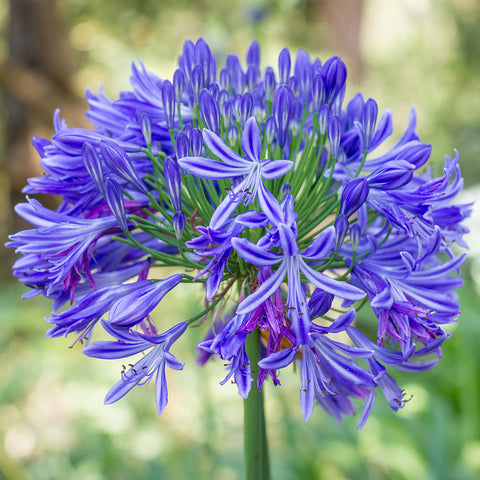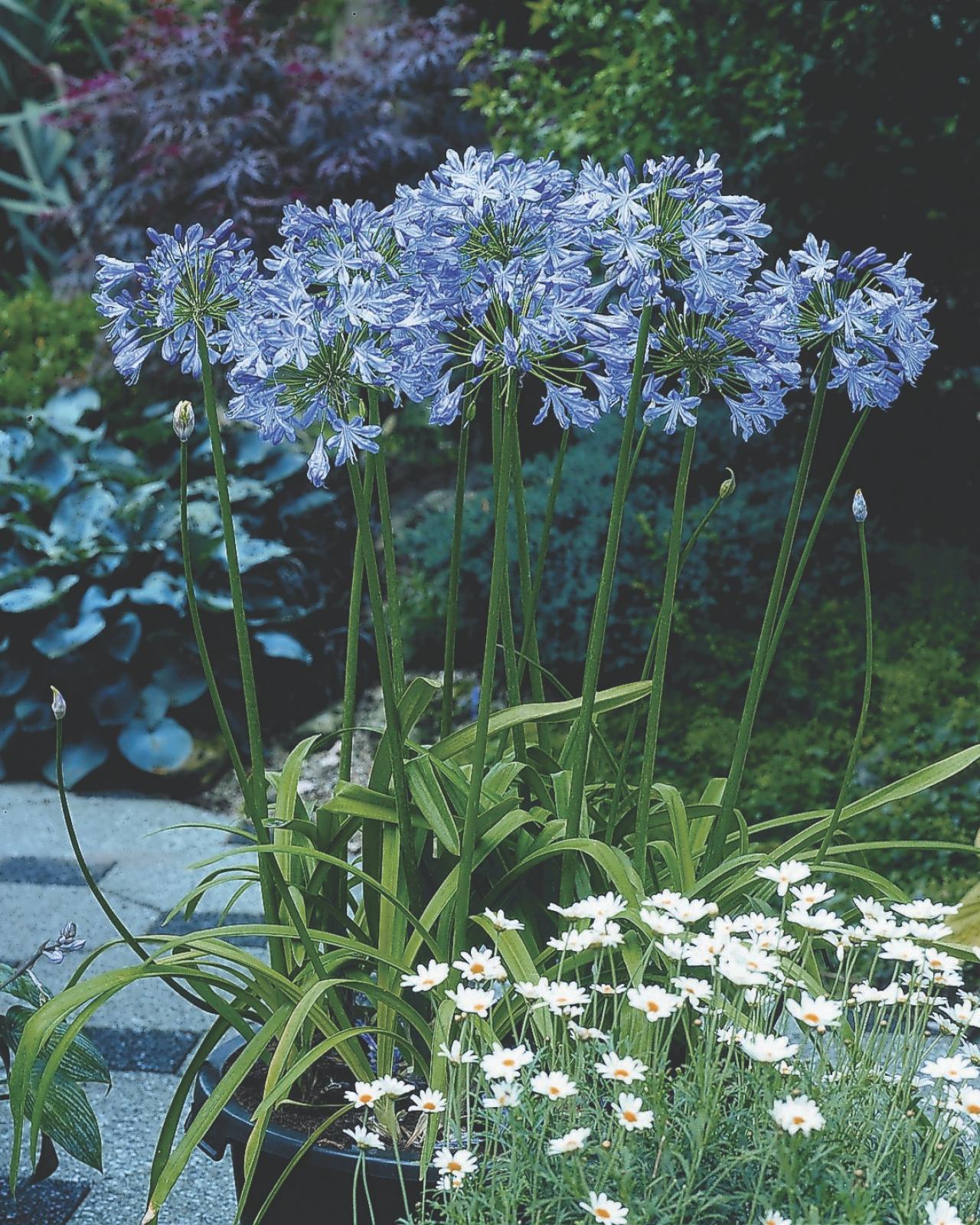Agapanthus Varieties: Picking the Best for Your Landscape
Agapanthus Varieties: Picking the Best for Your Landscape
Blog Article
Grasping the Art of Agapanthus Care: Crucial Actions for Healthy Development and Vivid Blossoms
In the realm of horticulture, the farming of agapanthus stands as a rewarding endeavor for those who seek to support these classy flowering plants. From selecting the right selection to mastering trimming strategies, the trip in the direction of cultivating growing agapanthus plants is multifaceted and holds the vital to unlocking the full capacity of these organic gems.

Picking the Right Agapanthus Selection

When choosing the right Agapanthus variety for your garden, consider aspects such as environment suitability, bloom shade, and growth practice. Agapanthus, commonly understood as Lily of the Nile or African lily, can be found in a range of shades ranging from shades of purple and blue to white. Choose a bloom color that complements your existing yard palette to produce an unified landscape. Furthermore, think about the environment in your area to ensure the Agapanthus variety you select can thrive in your details problems. Some ranges are more forgiving of chilly temperature levels, while others choose warmer climates. Understanding the development habit of different Agapanthus varieties is crucial for proper positioning within your garden. Some selections have a clumping development routine, perfect for containers or borders, while others have a more spreading nature, suitable for ground cover or mass growings. By thoroughly examining these factors, you can choose the excellent Agapanthus selection to boost the appeal of your yard.
Ideal Growing Conditions
Considering the optimum ecological demands is vital for effective Agapanthus cultivation. Agapanthus plants are delicate to cool temperature levels and should be protected from frost during wintertime months.
To make sure healthy growth and dynamic blooms, plant Agapanthus light bulbs at a deepness of regarding 2-4 inches and room them 8-12 inches apart. Mulching around the base of the plants helps retain wetness and suppresses weed growth.
Watering and Feeding Tips
Maintaining appropriate wetness degrees and providing vital nutrients are essential components in the treatment program for Agapanthus plants. When it comes to sprinkling Agapanthus, it is essential to strike an equilibrium. These plants like constantly damp dirt however are vulnerable to root rot if overwatered.
Feeding Agapanthus is vital for promoting healthy and balanced growth and prolific flowers. Use a balanced fertilizer, such as a 10-10-10 formula, in the very early spring as brand-new development arises. By complying with these watering and feeding pointers, you can guarantee your Agapanthus plants prosper and produce vibrant, long-lasting blossoms.
Pruning Strategies for Agapanthus
Trimming Agapanthus plants at the appropriate times and with proper methods is essential for preserving their wellness and advertising optimal growth and blooming. The ideal time to trim Agapanthus is in late winter or early spring before brand-new growth arises.
Deadheading spent blossoms can also redirect the plant's energy right into producing even more blooms rather than setting seeds. If you want to collect seeds for proliferation, leave some blossoms to dry and mature on the plant.
Keep in mind to use tidy, sharp devices to make accurate cuts and reduce the danger of presenting conditions. Agapanthus. Normal pruning will certainly aid keep your Agapanthus looking neat and healthy and balanced while ensuring a bountiful display of stunning blossoms
Taking Care Of Usual Pests and Conditions
After making sure correct pruning techniques for Agapanthus, it is crucial to attend to typical bugs go to this web-site and conditions that can impact the health and wellness and vitality of these plants. One typical parasite that influences Agapanthus is the Agapanthus gall midge.
Another typical issue is fungal leaf area, which provides as dark sores on the leaves. To avoid fungal diseases, make certain excellent air blood circulation around the plants, stay clear of overhanging watering, and remove any type of contaminated fallen leaves quickly. In addition, Agapanthus plants can deal from this source with root rot if they are planted in badly draining dirt. To avoid this, plant Agapanthus in well-draining soil and stay clear of overwatering. By being attentive and taking prompt action versus diseases and insects, you can aid your Agapanthus plants prosper and produce vivid flowers.

Final Thought
To conclude, grasping the art of agapanthus care involves selecting the right variety, giving perfect planting conditions, correct watering and feeding, suitable pruning strategies, and resolving typical bugs and conditions. By complying with these essential actions, you can ensure healthy and balanced growth and vivid blossoms for your agapanthus plants. Keep in mind to on a regular basis check and preserve your plants to advertise their total health and longevity.
To make certain healthy and article balanced growth and vibrant blooms, plant Agapanthus bulbs at a depth of about 2-4 inches and area them 8-12 inches apart. By adhering to these watering and fertilizing pointers, you can guarantee your Agapanthus plants thrive and create dynamic, lasting flowers.
One common parasite that influences Agapanthus is the Agapanthus gall midge. In addition, Agapanthus plants can suffer from root rot if they are planted in inadequately draining soil. By following these crucial steps, you can guarantee healthy development and lively blooms for your agapanthus plants.
Report this page